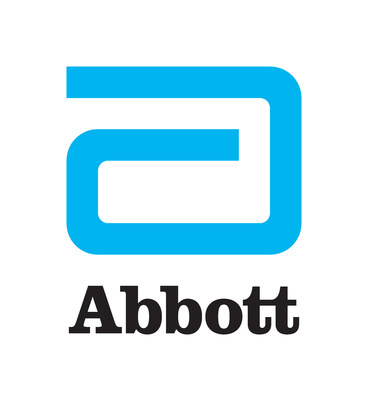- Abbott's breakthrough technology enables the world's first beat-to-beat, wireless communication and synchronization between two leadless pacemakers, which are smaller than a AAA battery
- Leadless pacemakers provide a new minimally invasive option that will revolutionize care for more people in the U.S. who need pacing to treat a variety of slow or abnormal heart rhythms
- Approval comes on the heels of recent late-breaking clinical trial data showing that the AVEIR™ DR leadless pacemaker system is safe and effective at treating abnormal heart rhythms
ABBOTT PARK, Ill., July 5, 2023 /PRNewswire/ -- Abbott (NYSE: ABT) today announced that the U.S. Food and Drug Administration (FDA) has approved the AVEIR™ dual chamber (DR) leadless pacemaker system, the world's first dual chamber leadless pacing system that treats people with abnormal or slow heart rhythms. With more than 80% of people who need a pacemaker requiring pacing in two chambers of the heart (both the right atrium and right ventricle), the approval significantly increases access to leadless pacing for millions of people across the U.S.[i]
Experience the full interactive Multichannel News Release here: https://www.multivu.com/players/English/9182151-abbott-receives-fda-approval-aveir-dr/
"Modern medicine has been filled with technological achievements that fundamentally changed how doctors approach patient care, and now we can officially add dual chamber leadless pacing to that list of achievements," said Vivek Y. Reddy, M.D., director of cardiac arrhythmia services for the Mount Sinai Hospital and the Mount Sinai Health System. "In delivering a true dual chamber leadless pacemaker system, Abbott is expanding access to the benefits of leadless pacing to far more people than ever before and provided additional options to improve our ability to treat people with slow or abnormal heart rhythms."
Through Abbott's proprietary i2i™ communication technology, AVEIR DR devices provide synchronized or coordinated cardiac pacing between two leadless pacemakers based on the person's clinical needs. The i2i technology utilizes high-frequency pulses to relay messages via the naturally conductive characteristics of the body's blood between each leadless pacemaker. To support dual chamber therapy, each implant communicates beat-to-beat with a paired, co-implanted device. This conductive communication is critical, because it uses far less battery current than inductive, radio frequency or Bluetooth® communication which are other alternatives used in implantable medical devices or traditional pacemakers.
Roughly one-tenth the size of a traditional pacemaker, the AVEIR DR leadless pacing system is made up of two devices – the previously-approved AVEIR VR single chamber device, which paces the right ventricle, and the now-approved AVEIR AR single chamber device, which paces the right atrium. The AVEIR DR system incorporates Abbott's novel i2i technology, which solves a significant engineering challenge by offering beat-to-beat communication between the two leadless pacemakers.
Unlike traditional pacemakers, leadless devices are implanted directly into the heart through a minimally invasive procedure and eliminate the need for cardiac leads. As a result, leadless pacemakers reduce people's exposure to potential lead and infection-related complications and offer a less restrictive and shorter recovery period post-implantation.
The FDA approval of the AVEIR DR dual chamber leadless pacemaker system comes on the heels of recent late-breaking clinical data published in The New England Journal of Medicine showing that AVEIR DR system met its three prespecified primary endpoints for safety and efficacy. Results from the AVEIR DR i2i Investigational Device Exemption (IDE) study through three-months post-implant showed a 98.3% implant success rate for physicians and more than 97% of people had a successful atrio-ventricular synchrony, so that the upper and lower chamber were beating normally, despite different types of underlying slow heart rhythms.
"Leadless pacemakers have been limited to a single chamber device because seamless, wireless synchronization of two pacemakers has been an insurmountable engineering challenge - until now," said Randel Woodgrift, senior vice president of Abbott's cardiac rhythm management business. "Our team of dedicated scientists and engineers solved one of medtech's complex challenges in treating abnormal heart rhythms with the AVEIR pacemaker, a tiny device packed with powerful technology."
Shorter, smaller and slimmer than a AAA battery, each AVEIR pacemaker is implanted via a minimally invasive procedure. The device attaches to the heart's interior surface with a screw-in mechanism – known as a helix – that allows for future retrieval of the device should therapy needs evolve, or if the device needs to be replaced in the future. The AVEIR DR system is also designed to provide real-time pacing analysis, so physicians can assess proper placement of the device during the procedure and before implanting the device to the inside of the heart chamber.
For U.S. important safety information on the AVEIR DR system, visit: https://bit.ly/3XlRJbO
About Abbott:
Abbott is a global healthcare leader that helps people live more fully at all stages of life. Our portfolio of life-changing technologies spans the spectrum of healthcare, with leading businesses and products in diagnostics, medical devices, nutritionals and branded generic medicines. Our 115,000 colleagues serve people in more than 160 countries.
Connect with us at www.abbott.com, on LinkedIn at www.linkedin.com/company/abbott-/, on Facebook at www.facebook.com/Abbott and on Twitter @AbbottNews.
Bluetooth is a registered trademark of Bluetooth SIG, Inc.
|
____________________
|
|
[i] Mond Harry, Proclemer A. The 11th world survey of cardiac pacing and implantable cardioverter defibrillators; calendar year 2009 – a world society of arrhythmia's project. PACE. August 2011; 34 (8): 1013-1027
|
SOURCE Abbott
For further information: Abbott Media: Alicia Swanson, (669) 210-7204; Abbott Financial: Mike Comilla, (224) 668-1872
 BACK TO PRESS RELEASES
BACK TO PRESS RELEASES